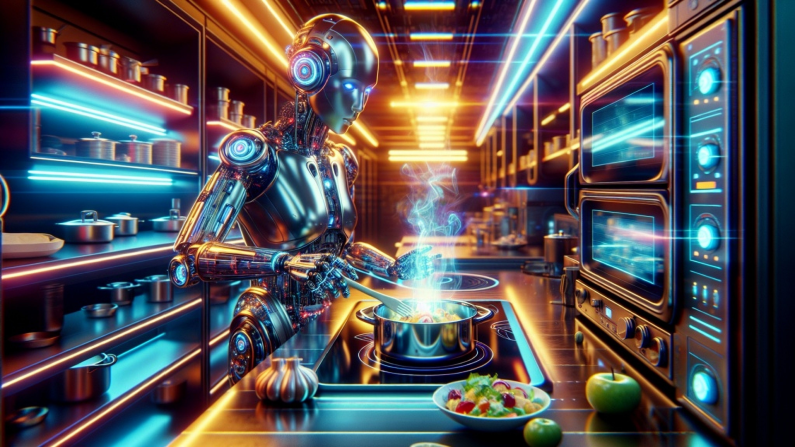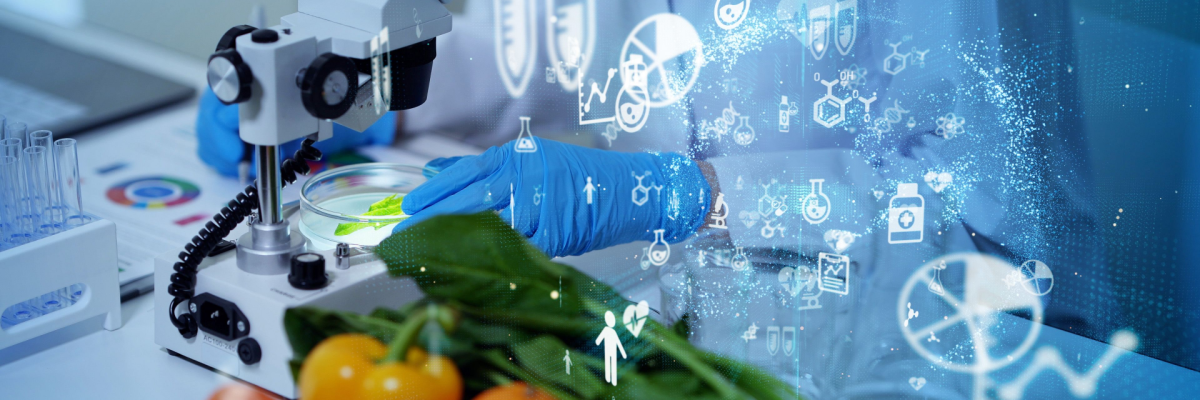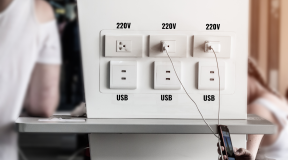Surely you’ve wondered at some point what our daily diet will look like in the future. Pills replacing a full meal, a tube burger like astronauts eat, or food printed on a 3D printer?
While these concepts still seem like something out of science fiction, foodtech is already drastically changing our perception of how we find, order, prepare, and eat food. That’s right, it’s called foodtech – a whole global trend in the development of business and technology that makes restaurants, food delivery services, and the food itself much simpler, more efficient, and perhaps even tastier.
What is Foodtech, or “The Future of Gastronomy is Already Here”?

Foodtech is an umbrella term that unites technological innovations in all areas of the food industry, from farms to the delivery of ready-made meals right to your door. Imagine Silicon Valley deciding to get involved in cooking, bringing all its advanced developments and even big data analysis to the table. Thus, Foodtech includes the following key areas:
-
Agtech (Agricultural Technologies): This is precision farming using drones and sensors to monitor crop conditions, vertical farms in urban environments, automated irrigation and fertilization systems, and genetically modified crops to increase yields and disease resistance. By the way, there’s really nothing evil about GMOs; hopefully, you already know that. GMOs are completely safe and, in addition, prevent the threat of global hunger by allowing various crops to be grown where they simply wouldn’t have survived before, and in the necessary quantities.
-
Alternative Protein Sources: The development and production of alternative protein sources is becoming increasingly relevant due to the growing global population and the problems associated with the environmental consequences of traditional animal husbandry. This category includes plant-based meat (for example, from companies like Impossible Foods and Beyond Meat), meat grown in the laboratory from animal cells, and the search for new and unusual protein sources, such as insects. What’s wrong with insects? China has been doing this for a long time!
-
Innovations in Food Production: This involves the development of new, more efficient, and environmentally friendly methods for processing, packaging, and storing food, allowing for longer shelf life, preservation of nutrients, and reduction of food waste. This also includes 3D food printing technologies, allowing for the creation of personalized products with specific composition and shape. As early as 2023, by the way, Singaporean scientists 3D-printed a likeness of squid rings from algae and vegetable oil.
-
Restaurant Technologies: Automation and optimization of processes in restaurants, from ordering to preparing and serving dishes. This category includes online ordering and table reservation systems, electronic menus, automated kitchens using robots instead of live chefs, inventory management and analytics systems for optimizing or personalizing menus, as well as automating and optimizing pricing.
-
Food Delivery: Online platforms, mobile applications for ordering food from restaurants and stores, home delivery services for groceries, as well as innovative solutions in the field of logistics, such as route optimization using AI, drone delivery, and the use of robot couriers. The latter significantly reduces delivery time - more on this below.
-
Personalized Nutrition: The development of individual diets and nutritional plans based on genetic data, blood tests, and other parameters, allowing for the individual needs and preferences of each person. Here, Foodtech intertwines with the healthcare system and opens up new opportunities for improving human health.
-
Smart Packaging: The development of packaging that can indicate the freshness of a product, change color when spoiled, contain QR codes with information about origin and composition, as well as interact with mobile devices to provide additional information and recommendations.
-
Combating Food Waste: The development and implementation of technologies and strategies aimed at reducing the amount of food waste at all stages of production and consumption, from farms to households. For example, using waste to generate energy or reusing it.
Restaurant Business 2.0: When Robots Cook and AI Selects the Menu

For the average person, of course, the technologies used in the restaurant business and delivery services are most important and interesting. Thus, traditional restaurants as we know them are gradually being transformed by the aforementioned innovations. Automation, artificial intelligence, and big data analysis are changing almost all aspects of the restaurant business: from kitchen organization to customer interaction.
Today, you can already find restaurants where part of the work is done by robots. They can prepare simple dishes, pour drinks, and even deliver orders to tables, which significantly reduces personnel costs and increases service speed. For example, the Creator restaurant chain in San Francisco (USA) uses a chef-robot to prepare hamburgers. This robot not only assembles the burger from pre-prepared ingredients but also independently chops vegetables, prepares sauces, fries buns, and even packages the finished product. This allows the Creator chain to offer high-quality hamburgers at an affordable price while maintaining high service speed.
Another interesting trend is menu personalization. With the help of artificial intelligence, restaurants can analyze data on customer preferences, their order history, and even take into account their dietary restrictions and allergies to offer them dishes that they are highly likely to enjoy. In some establishments, customers can even order a dish created based on an analysis of their DNA, thanks to which the dish will best match their biological needs in terms of protein/fat/carb ratio and, for example, not contain potential allergens. Habit already uses this approach, offering people to take a special test, based on which their diet is built and a menu is formed.
“Smart” kitchens are also gaining popularity! That is, kitchens that are equipped with sensors, control temperature, humidity, and other parameters, which allows you to cook dishes with high precision and stable quality. They also typically incorporate automatic product ordering systems for timely inventory replenishment, which also allows restaurant owners to save on purchases. For example, there’s Flippy, an AI-powered technology that uses computer vision and controls the oil temperature in the fryer and frying time, and also independently moves the finished dishes to the order pick-up area. Today, Flippy is used in one of Los Angeles’s burger joints.
And Bear Robotics offers Servi robot waiters, which help staff deliver orders, clear tables, and replenish drink supplies. By the way, special sensors and a pre-installed navigation system (something like robot vacuum cleaner sensors) help them avoid collisions with visitors and various obstacles such as chairs and tables.
Some restaurants use interactive tables where you can view the menu, place orders, pay the bill, and even play games. Augmented reality technologies allow you to see what the dish will look like before ordering, which helps make the choice more informed. For example, at the Inamo restaurant in London, visitors can not only order food without the help of a waiter using an interactive table with virtual images, but also choose the tablecloth design, call a waiter, or even a taxi when the meal is over and it’s time to go home.
Food Delivery: Faster, More Convenient, More Futuristic

The food delivery sector continues to experience rapid growth, first driven by the COVID-19 pandemic and the resulting popularity of online ordering. Today, online platforms and mobile applications allow you to order food from almost any restaurant or store without leaving your home or office. For this reason, the question of how to deliver food even faster and cheaper than ever before is crucial for delivery services.
Thus, optimizing courier routes using artificial intelligence allows you to bring food even hotter. Major market players such as DoorDash, Uber Eats, and Grubhub use complex algorithms for this purpose, taking into account many factors, such as traffic jams, weather conditions, the number of orders, and the location of available couriers, etc. According to data from the beginning of 2025, the use of AI to optimize routes has allowed these companies to reduce the average delivery time by 15-20%.
In some cities, drone food delivery is being tested, which also makes it possible to reach hard-to-reach and remote areas. For example, Wing, owned by Google, is successfully testing the delivery of food, medicine, and other goods by drones in Australia, the USA, and Finland. According to the company, drone delivery takes an average of about 10 minutes, which is significantly faster than traditional courier delivery. In 2024, the number of food deliveries in this way increased by 60% compared to 2023.
Also, Big Data is actively used in delivery services, mainly to personalize restaurant offers, menus, and promotions. According to surveys conducted in early 2025, 78% of food delivery service users believe that personalized offers make the service more convenient and attractive. In 2024, the number of applications personalizing their offers in this way grew by 30%.
In 2024 and 2025, the Foodtech market continues to demonstrate steady growth, despite economic challenges and changing consumer preferences. According to analytical agencies, the volume of the global Foodtech market will reach $1 trillion USD by the end of 2025, with an average annual growth rate (CAGR) of approximately 8-10%. Thus, Foodtech is not just a trend, but a new era in the food industry! Technology is changing our ideas about convenient and fast food, in addition allowing you to make your meals even more enjoyable - who would refuse a cupcake made exactly to their favorite recipe? So all that remains for us is to wait for further growth of Foodtech and enjoy!
Share this with your friends!






Be the first to comment
Please log in to comment